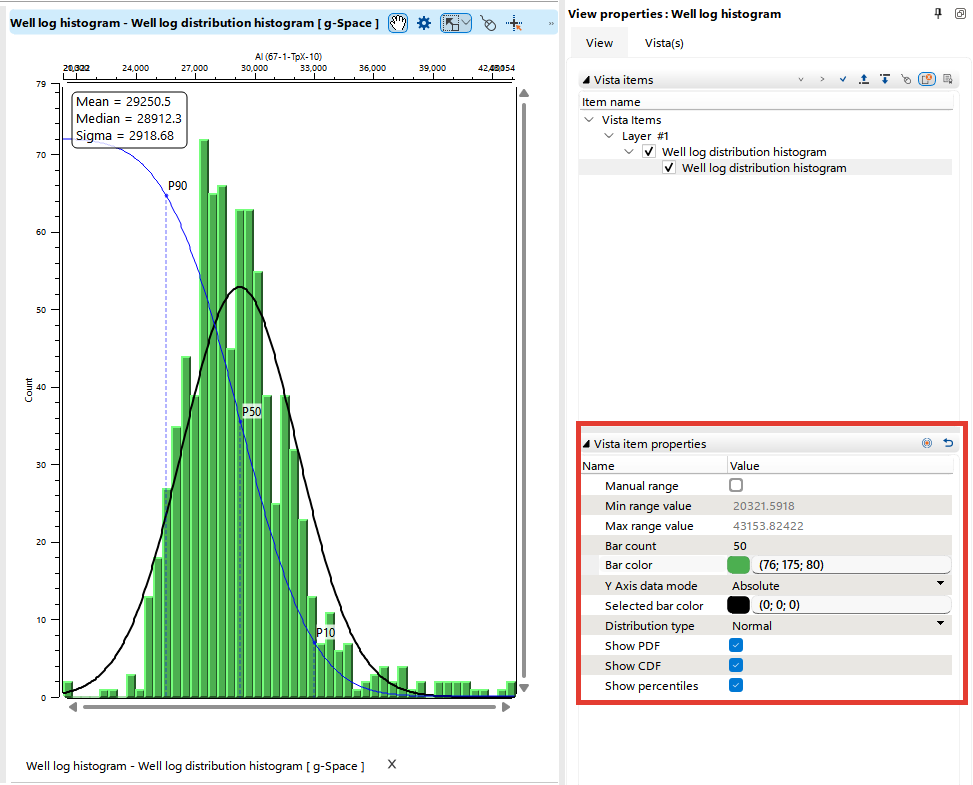Histogram analysis allows users to visualize the distribution of a single variable, helping to identify frequency patterns, ranges, and data trends.
To create Histogram view go to the Views bar, navigate to Graphs and click on Histogram button:

To configure the analysis, set the parameters in the Statistical Analysis bar:
•Data Source: Available options include Well Logs and XY Data.
oWell Logs: Select a specific well and choose a parameter such as RHOZ, DT, or any other well log measurement.
oXY Data: This mode allows users to analyze numerical values, such as seismic attributes or spatial data, represented in XY format.
•Group and Parameter: When working with Well Logs, users can specify the desired well log group and the parameter to be analyzed. For XY Data, users can select a group containing numerical datasets (e.g., amplitude, porosity).
•Filter Options: Use Bounding Polygon, MD Range, or By Markers to refine the data included in the analysis:
oFilter by MD allows you to define the depth interval manually or through predefined markers.
oBounding Polygon restricts the analysis to specific areas of interest.

The Histogram view automatically displays the following statistical parameters for the analyzed data:
•Mean
•Median
•Standard Deviation

Visual Settings
Users can customize the Histogram display for better interpretation:
•Bar Count: Adjust the number of bars to control the resolution of the histogram.
•Bar Color: Set the color of the bars for improved visual clarity.
Optional overlays can be added to the histogram:
•Probability Density Function (PDF): Visualizes the likelihood of data values within the distribution.
•Cumulative Distribution Function (CDF) Curve: Represents the cumulative frequency of the dataset.
•Percentile Markers: Visualize key percentiles, such as P90, P50, and P10, for additional statistical insights.